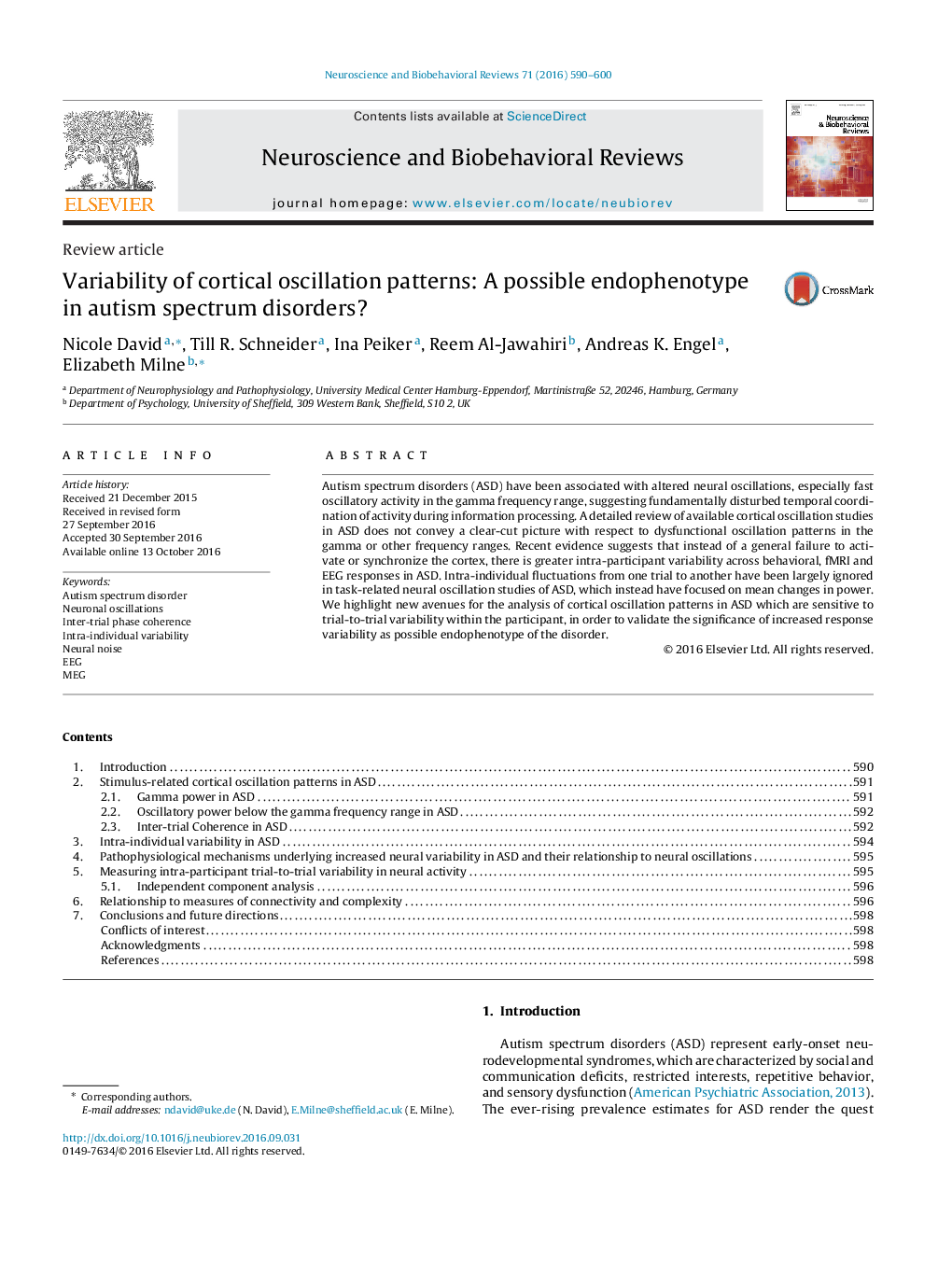| Article ID | Journal | Published Year | Pages | File Type |
|---|---|---|---|---|
| 5043768 | Neuroscience & Biobehavioral Reviews | 2016 | 11 Pages |
â¢Stimulus-related cortical oscillations patterns in ASD are reviewed.â¢No clear-cut picture of specific dysfunctional oscillation patterns has emerged.â¢Recent evidence points to increased intra-individual trial-to-trial variability in behavioral and neurophysiological responses in ASD.â¢Intra-individual variability represents a new avenue for the investigation of oscillatory activity in ASD.
Autism spectrum disorders (ASD) have been associated with altered neural oscillations, especially fast oscillatory activity in the gamma frequency range, suggesting fundamentally disturbed temporal coordination of activity during information processing. A detailed review of available cortical oscillation studies in ASD does not convey a clear-cut picture with respect to dysfunctional oscillation patterns in the gamma or other frequency ranges. Recent evidence suggests that instead of a general failure to activate or synchronize the cortex, there is greater intra-participant variability across behavioral, fMRI and EEG responses in ASD. Intra-individual fluctuations from one trial to another have been largely ignored in task-related neural oscillation studies of ASD, which instead have focused on mean changes in power. We highlight new avenues for the analysis of cortical oscillation patterns in ASD which are sensitive to trial-to-trial variability within the participant, in order to validate the significance of increased response variability as possible endophenotype of the disorder.
